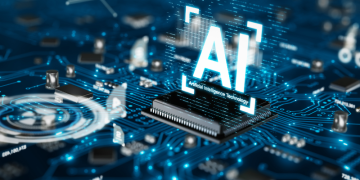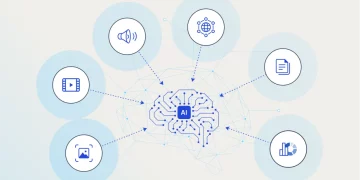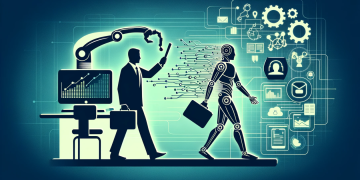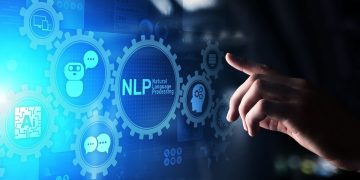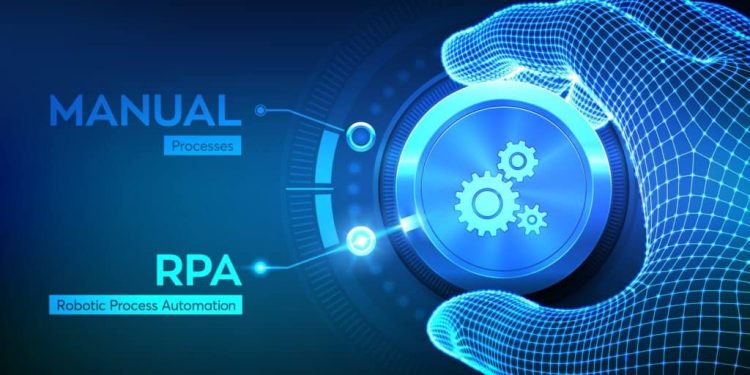The manufacturing sector has traditionally been at the core of industrial economies, but as global competition intensifies and consumer demands evolve, traditional manufacturing models are being disrupted. Enter smart manufacturing, where Artificial Intelligence (AI) plays a pivotal role in driving efficiency, improving product quality, and enhancing overall competitiveness.
With the integration of AI in manufacturing, businesses are seeing a dramatic shift in production processes, supply chains, quality control, and maintenance, leading to faster production cycles, reduced costs, and increased operational flexibility. From predictive analytics to autonomous robots and AI-driven design, the possibilities are virtually endless for companies willing to embrace AI technology.
This article explores the transformative role of AI in smart manufacturing, its applications across various manufacturing stages, and how businesses can harness AI to remain competitive in the future.
1. The Rise of Smart Manufacturing: AI’s Role in the Industry
The concept of smart manufacturing is not merely about automating tasks; it’s about creating an interconnected, flexible, and intelligent ecosystem where production processes are continuously optimized through data, advanced algorithms, and real-time decision-making. AI is at the heart of this transformation, enabling manufacturers to collect, analyze, and act on vast amounts of data in ways that were previously impossible.
1.1 What Is Smart Manufacturing?
Smart manufacturing refers to the use of advanced technologies—such as AI, the Internet of Things (IoT), robotics, and big data analytics—to optimize the manufacturing process. It involves the integration of digital systems, connected devices, and machine learning models to create more efficient, flexible, and intelligent production systems.
1.2 How AI is Powering Smart Manufacturing
AI enhances smart manufacturing by providing real-time insights that optimize various aspects of production, including:
- Predictive maintenance
- Demand forecasting
- Supply chain optimization
- Quality control
- Process automation
By implementing AI solutions, manufacturers can make data-driven decisions, reduce downtime, enhance product quality, and improve efficiency.
2. Key AI Applications in Smart Manufacturing
AI is being integrated into various stages of manufacturing, transforming both production processes and business strategies. Below are some of the key applications where AI is making a significant impact.
2.1 Predictive Maintenance: Reducing Downtime and Preventing Failures
One of the most significant challenges in manufacturing is equipment failure, which can lead to unexpected downtime and costly repairs. Predictive maintenance uses AI to analyze historical data from machinery, sensors, and IoT devices to predict when a machine is likely to fail, allowing businesses to perform maintenance before the failure occurs.
Case Study: Siemens and Predictive Maintenance
Siemens has developed an AI-driven predictive maintenance solution for its industrial machinery. By analyzing data from thousands of sensors installed on factory equipment, Siemens can forecast potential failures and schedule maintenance only when needed, instead of following a fixed schedule.
- Impact: This not only reduces costs associated with unscheduled downtime but also extends the lifespan of equipment, leading to significant savings in the long run.
Lessons Learned:
- Data Utilization: AI can analyze massive amounts of data from sensors to detect patterns that humans might miss, improving machine reliability.
- Cost Reduction: Predictive maintenance helps avoid unnecessary repairs, reduce downtime, and lower maintenance costs.
2.2 AI-Driven Quality Control: Enhancing Product Consistency
Ensuring high-quality products is critical in manufacturing. Traditionally, quality control has relied on manual inspections, which can be time-consuming, inconsistent, and prone to human error. AI-powered quality control systems, often supported by machine vision, can automatically inspect products in real-time, identifying defects, inconsistencies, and deviations from the desired specifications.
Case Study: Foxconn’s AI Vision System
Foxconn, one of the largest electronics manufacturers in the world, has integrated AI-driven visual inspection systems on its production lines. These systems use machine learning algorithms to analyze images of components and identify defects or irregularities that might be missed by human inspectors.
- Impact: This AI system reduces human error, improves inspection speed, and increases overall product quality by detecting even the smallest defects in real-time.
Lessons Learned:
- Accuracy and Speed: AI-driven quality control systems significantly improve the speed and accuracy of product inspections, leading to higher product quality and fewer defects.
- Cost Efficiency: By automating quality control, manufacturers can reduce labor costs and avoid costly defects that result in customer returns or reputational damage.
2.3 AI in Supply Chain Optimization: Enhancing Flexibility and Responsiveness
In today’s globalized market, manufacturers are under constant pressure to optimize their supply chains for speed, cost, and flexibility. AI can play a crucial role in analyzing market trends, inventory levels, and supplier capabilities to predict demand fluctuations and ensure that manufacturers always have the right materials at the right time.
Case Study: IBM’s Watson Supply Chain
IBM’s Watson Supply Chain leverages AI to help businesses improve visibility and predict disruptions in their supply chains. By analyzing data from across the supply chain, including weather patterns, market trends, and production schedules, IBM’s AI system can forecast potential disruptions and suggest alternatives to avoid delays.
- Impact: Businesses using AI-driven supply chain management tools can optimize their procurement, inventory, and logistics processes, leading to reduced operational costs and improved responsiveness to market changes.
Lessons Learned:
- Dynamic Adjustment: AI allows manufacturers to adapt to changing demand and market conditions in real-time, helping avoid stockouts or overstocking.
- Supply Chain Resilience: By predicting disruptions before they occur, AI can help businesses mitigate risks and maintain smooth operations.
2.4 Robotic Process Automation (RPA): Streamlining Production Tasks
In manufacturing, repetitive tasks such as material handling, assembly, and packing can be time-consuming and resource-intensive. Robotic Process Automation (RPA), powered by AI, can automate these tasks, improving productivity, accuracy, and worker safety.
Case Study: FANUC Robotics
FANUC, a leader in industrial robotics, has developed AI-powered robots that are capable of performing a wide range of tasks in manufacturing. These robots use machine learning algorithms to adapt to different environments, optimize their tasks, and improve over time.
- Impact: The integration of AI in robotic systems has led to increased production speeds, better precision, and reduced human error, making manufacturing processes more efficient.
Lessons Learned:
- Flexibility and Adaptability: AI-powered robots can be reprogrammed to perform different tasks, allowing manufacturers to adjust production lines quickly.
- Improved Safety: Automating hazardous or repetitive tasks helps improve worker safety and reduces the risk of workplace injuries.

2.5 AI-Enhanced Product Design and Customization
AI also plays a significant role in product design and customization, enabling manufacturers to design products that are more closely aligned with customer needs while also optimizing for cost-efficiency. AI-driven generative design tools allow designers to input certain parameters (e.g., material types, weight restrictions) and let the AI generate optimized design solutions.
Case Study: General Motors and AI in Design
General Motors has implemented AI in its design processes to create more efficient automotive components. Using AI-driven generative design, GM engineers can explore a wider range of design options and optimize product designs for material use and structural integrity.
- Impact: AI allows manufacturers to design lighter, more efficient products that require fewer materials, reducing waste and costs while improving performance.
Lessons Learned:
- Innovation in Design: AI enables manufacturers to explore design options that would be impossible to conceive manually, leading to more efficient, cost-effective products.
- Customer-Centric Customization: AI-driven design tools allow for the creation of more personalized products that better meet customer demands.
3. Overcoming Challenges in Implementing AI in Manufacturing
Despite the enormous potential of AI in manufacturing, businesses face several challenges when adopting these technologies. Some of the key obstacles include:
- High Initial Investment: The cost of implementing AI solutions can be prohibitive, especially for small and medium-sized enterprises (SMEs).
- Data Quality: AI systems require large amounts of high-quality data to function effectively. Poor data quality or a lack of data infrastructure can hinder AI’s success.
- Workforce Transition: The introduction of AI and automation raises concerns about job displacement. Manufacturers must address these concerns by reskilling employees and fostering a culture of innovation.
- Integration Complexity: Integrating AI solutions into existing manufacturing processes and systems can be complex and time-consuming.
However, with the right strategy, businesses can navigate these challenges. Partnering with AI technology providers, starting with small-scale pilot projects, and focusing on employee training can help ease the transition to AI-powered manufacturing.
4. Conclusion: AI as a Key Driver of Competitive Advantage in Manufacturing
AI is no longer a futuristic technology—it’s a critical component of smart manufacturing that is already reshaping the industry. By leveraging AI in areas like predictive maintenance, quality control, supply chain optimization, and product design, manufacturers can enhance their competitiveness, reduce costs, and improve product quality.
As the manufacturing sector continues to embrace AI, those who adopt these technologies early will gain a competitive edge in an increasingly crowded and dynamic market. The future of manufacturing is smart, data-driven, and highly efficient, and AI will be the catalyst for this transformation.










